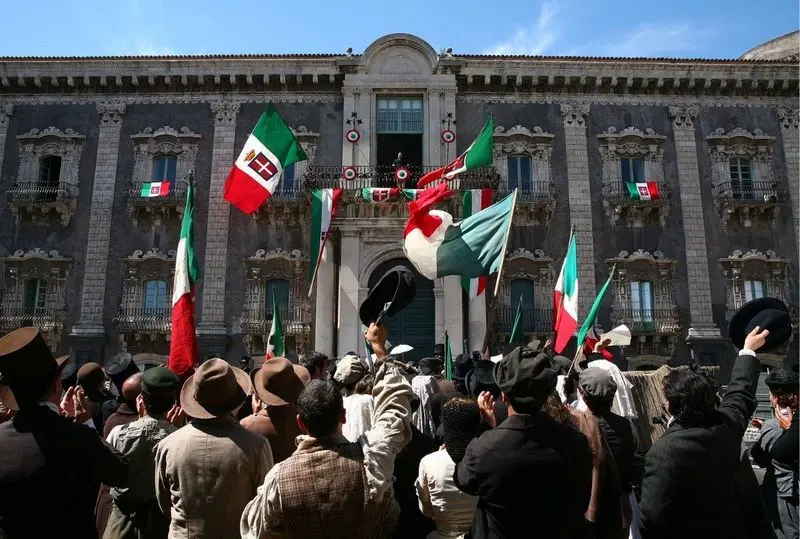Repel the foreigner from Venice!
On the eve of the Battle of Custoza, Countess Livia Serpieri, the wife of an Austrian sympathizer, meets and falls in love with a young Austrian officer, Franz Mahler, during a performance of Giuseppe Verdi’s Trovatore at Teatro La Fenice in Venice. These are the opening scenes of Luchino Visconti’s Senso. Overcoming her initial resistance, Livia spends a night with the Lieutenant walking the calli of Venice, deserted because of the curfew. Dawn surprises the couple on the Fondamenta of Cannaregio, which leads to the Campo del Ghetto Nuovo, a small island in the sestiere of Cannaregio, linked by three bridges and site of the historical Jewish Ghetto. This is the start of a tumultuous relationship that will last until the officer’s disappearance. Distraught, Livia searches for him at the Porta Magna dell'Arsenale di Venezia, in the Campo dell'Arsenale in the Fondamenta Arsenale, in the Castello neighbourhood, east of Piazza San Marco.
When war breaks out, Livia and her husband move to Villa di Aldeno, actually Villa Godi Malinverni in Lugo di Vicenza: designed by Andrea Palladio, who began work there in 1537, it is today a UNESCO World Heritage Site. The “Sala di Venere” and the “Sala dell'Olimpo” were used for Livia’s bedroom and boudoir, the countess gives Lieutenant Franz money in the “Sala dei Cesari” and in the “Sala delle Muse”, the central sala served as the Serpieris’ drawing room.
While the battle of Custoza rages on (shot around Valeggio sul Mincio, Borghetto di Valeggio sul Mincio, San Giorgio in Salici), Livia reaches her lover in Verona where she discovers his true base nature. She arrives on the evening that the Italian troops are defeated and the final scenes were actually shot in the Trastevere area in Rome: the entrance into Verona is actually Porta Settimiana at the beginning of via della Lungara, on the right shore of the Tiber. Other scenes were shot in Via Anicia, via Garibaldi (where the countess reports that Franz has deserted), vicolo del Leopardo and via dell’Arco de’ Tolomei. Death by shooting squad takes place at Castel Sant’angelo.


